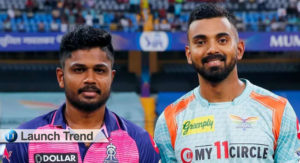On 8 December, during a regular Tuesday meeting about the spread of the pandemic coronavirus in the United Kingdom, scientists and public health experts saw a diagram that made them sit up straight. Kent, in southeastern England, was experiencing a surge in cases, and a phylogenetic tree showing viral sequences from the county looked very strange, says Nick Loman, a microbial genomicist at the University of Birmingham. Not only were half the cases caused by one specific variant of SARS-CoV-2, but that variant was sitting on a branch of the tree that literally stuck out from the rest of the data. “I’ve not seen a part of the tree that looks like this before,” Loman says.
Less than 2 weeks later, that variant is causing mayhem in the United Kingdom and elsewhere in Europe. Yesterday, U.K. Prime Minister Boris Johnson announced stricter lockdown measures, saying the strain, which goes by the name B.1.1.7, appears to be better at spreading between people. The news led many Londoners to leave the city today, before the new rules take effect, causing overcrowded railway stations. The Netherlands, Belgium, and Italy announced they were temporarily halting passenger flights from the United Kingdom. The Eurostar train between Brussels and London will stop running tonight at midnight, for at least 24 hours.
Scientists, meanwhile, are hard at work trying to figure out whether B.1.1.7 is really more adept at human-to-human transmission—not everyone is convinced yet—and if so, why. They’re also wondering how it evolved so fast. B.1.1.7 has acquired 17 mutations all at once, a feat never seen before. “There’s now a frantic push to try and characterize some of these mutations in the lab,” says Andrew Rambaut, a molecular evolutionary biologist at the University of Edinburgh.

Is it more dangerous?
Chris Whitty, the chief medical officer, stated clearly that there was no evidence to date that this variant alters disease severity, either in terms of mortality or the seriousness of the cases of COVID-19 for those infected. Work is underway to confirm this.
How do virus mutations happen?
Mutations are a natural part of virus evolution. In the case of SARS-CoV-2, these mutations may arise due to random errors during virus replication, be induced by antiviral proteins within infected people, or via genetic shuffling – known as recombination. Though signs of recombination are not currently detected in SARS-CoV-2.
Most viral mutations are expected to have no impact. For example, when our team assessed individual mutation replacements in more than 50,000 genomes from the first wave of the pandemic, we detected none that significantly altered viral fitness – the ability of the virus to survive and reproduce.
However, every so often a mutation, or in this case a particular combination of mutations, may strike lucky and offer the virus a new advantage. Viruses carrying these combinations of mutations may then increase in frequency by natural selection given the right epidemiological environment.

Where did the variant come from?
Right now, we don’t know. To date, scientists have not identified any closely related viruses to support the theory that the variant had been introduced from abroad. The patterns of mutations observed are more supportive of an extended period of adaptive evolution most likely in the UK based on current data.
Similar patterns of mutation to these have been observed in the evolution of SARS-CoV-2 in chronically infected patients with weaker immune systems. The current hypothesis is that such a scenario of chronic infection, in a single patient, may have played a role in the origin of this variant. This will continue to be investigated.
How many variations of SARS-CoV-2 have we found?
There are many thousands of lineages of SARS-CoV-2 which differ on average by only a small number of defining mutations. It remains true that SARS-CoV-2 currently in global circulation have little genomicindyc diversity. Subtleties in the mutations carried in different lineages can, however, be very useful for reconstructing patterns of transmission.
As an example, work early in the pandemic used lineage assignments to identify at least a thousand introductions of SARS-CoV-2 into the UK.
Why is this one different?
It is important to note that many of the mutations defining the UK variant have been observed in SARS-CoV-2 before and even sometimes quite early in the pandemic.
Yet the UK variant, or lineage, is defined by an unusual number and combination of mutations. One of these mutations, N501Y, has previously been shown to increase binding of the virus to receptors in our cells. N501Y was first sequenced in a virus in Brazil in April 2020 and is currently associated with a SARS-CoV-2 variant also rising in frequency in South Africa – an independent lineage from B.1.1.7 that is also warranting concern.
MK LHL testing data showing increasing prevalence of H69/V70 variant in positive test data – which is detected incidentally by the commonly used 3-gene PCR test. pic.twitter.com/1U0pVR9Bhs
— Tony Cox (@The_Soup_Dragon) December 19, 2020
The particular deletions identified in the spike protein of B.1.1.7 have appeared in multiple other lineages of the virus at increasing frequency and are also observed in chronic infections where they may alter antigenicity – recognition by immune antibodies. These deletions may also be associated with other mutations in the binding region of the coronavirus spike protein, including those observed in infections among farmed mink and a mutation shown to play a role in the virus’s ability to evade the immune system in humans. B.1.1.7 also harbours a truncated ORF8 gene, with deletions in this region previously associated with decreased disease severity.
The functional effect of these mutations and deletions, particularly when in the combination reported in B.1.1.7, are still to be determined. The high number of mutations and the recent increase in prevalence of this particular variant, together with the biological relevance of some of the mutation candidates, emphasises the need for in-depth study.
What does this mean for the vaccine?
At the moment we don’t know. Though we should be reassured that vaccines stimulate a broad antibody response to the entire spike protein, so it is anticipated that their efficacy will not be significantly hampered by mutations. This is already being tested.
However, there is an increasing body of evidence that other species of seasonal coronavirus es exhibit some ability to escape immunity over longer time periods.
It is therefore conceivable that we may reach a point where we are required to update our COVID-19 vaccines, as we do for influenza, to reflect the variants in circulation at the time. It’s too early to say if this will be the case now, but extensive genome sequencing, data sharing, and standardised reporting of variants will be vital to inform these efforts.








More Stories
Brent Renaud: Award-Winning US Filmmaker Killed In Ukraine
Bob Wall: ‘Enter The Dragon’ Actor Died At 82
FIFA 2022 Tickets: Here Is Everything You Need To Know